The Bhoga Nandishwara Temple is also surrounded by a beautiful natural setting, with lush greenery and stunning views of the surrounding hills, making it the perfect place for a peaceful and contemplative retreat from the hustle and bustle of city life. Join me as I explore this magnificent temple complex, learn about its rich history and culture, and marvel at its exquisite beauty.
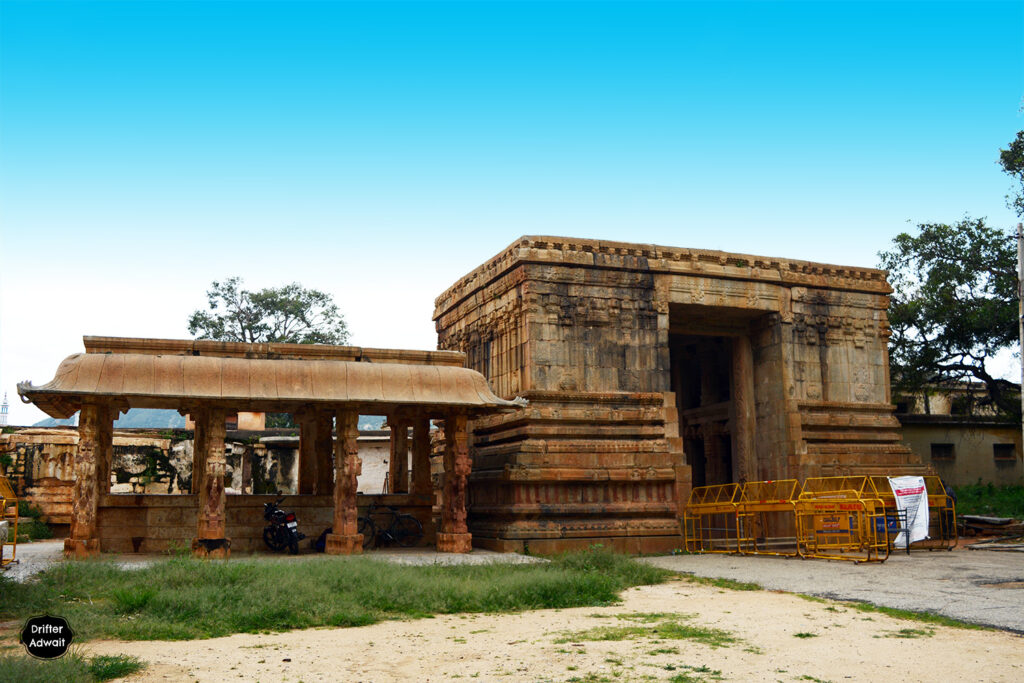
Many places in Bangalore appeal to the outgoing crowd. And if you are living in this city for a while, you exactly know which sites you should go to and mainly, which places you should avoid during weekends. One of the places you should avoid during the weekends is Nandi hills, as half of the entire city arrives there, on that small hilltop to create TikTok videos and insta reels.
Road to Nandi hills is scenic, but we are not going all the way towards the Nandi hills. Instead of taking a left after Devanhalli on NH44, we drive straight towards a small Nandi village, just a few kilometers before Chikkabellapur. There lies a thousand-year-old temple named Bhoga Nandishwara temple.
Who built the Bhoga Nandishwara Temple?

Archeological Survey of India has found several manuscripts, copper plates, and wall inscriptions. Inscriptions written on behalf of Nolamba ruler Nolambadiraja, the Rashtrakuta king Govinda III, copper plates of the Bana ruler, Jayateja and Dattiya, mention the presence of a Shiva temple in village Nandi.
The tiny village of Nandi has seen several power transformations over its 1500 years of history. From the 4th to 10th century, it used to be part of Bana-Nolamba territory. After that, it came under the ruling of wise kings of the Chola dynasty, later to be controlled by the Hoysalas. Several centuries after the Hoysalas, Vijaynagar Kings took back the invaders’ territories and recaptured the entire area. And hence, this unique temple encloses several defining architectural characteristics of each of these dynasties. Even though the actual historical evidence is not available on who has built this temple, as per the architectural style, experts date this temple in between the 9th and 10th centuries.
Bhoga Nandishwara Temple architecture
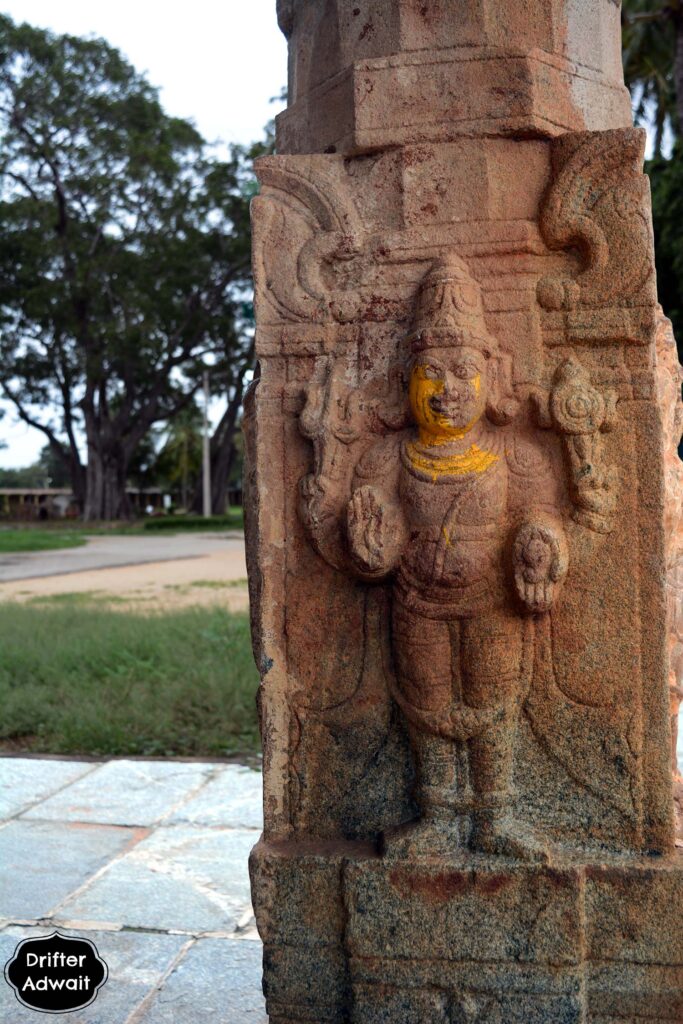
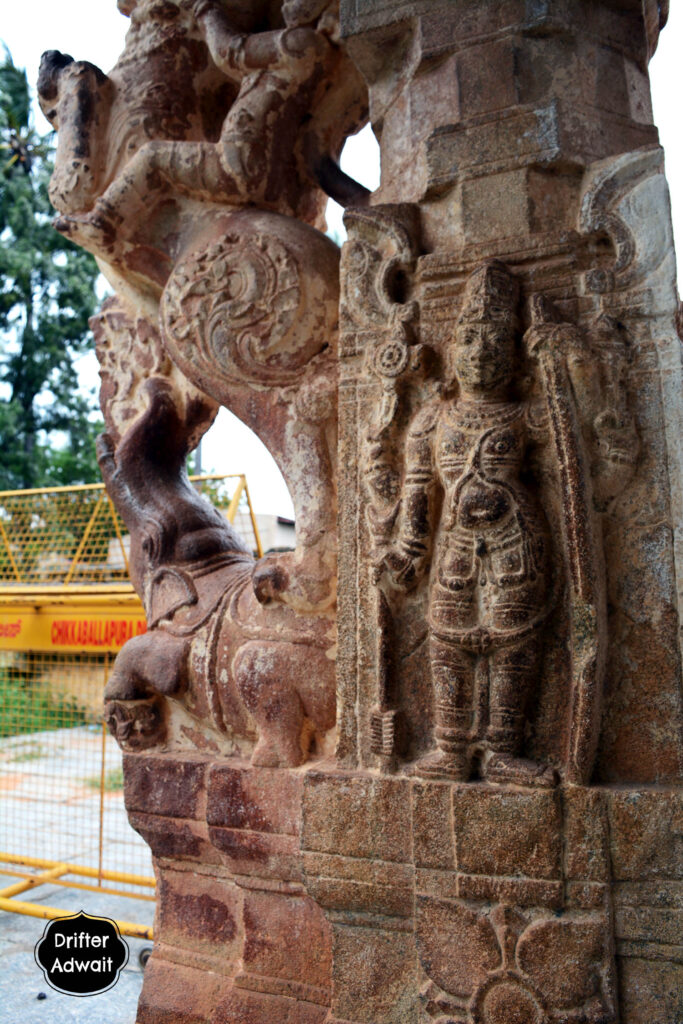

Bhoga Nandishwara has two big entrances, which welcome the devotees with open arms. The temple premice are enclosed with the Vijaynagar era stone wall (Prakara), with 110 by 75 meters. Even though popularly known as Bhoganandishwara temple, this ancient house of the divine is three temples with twin Shikharas dedicated to Lord Bholenath. These three temples show us the three stages of the life of Bholenath. The first one is Arunachaleshwara, depicting the playful childhood stage of Lord Mahadev. The middle one is the Uma Maheshwara shrine, stating the wedding of Lord Shiva and Divine Mother Parvati. Third one is Bhoga Nandishwara, where Shiva enjoys his married life, expressing the Grihastha-Ashrama of Lord Shiva.
From the temple premise, one can locate the tall Nandi hill, where the fourth temple, Yoga-Nandishwara, depicts the Sanyasa Ashrama or the renunciation stage of Lord, where he leaves everything behind and becomes the ultimate reality himself. Both Bhoga Nandishwara and Arunachaleshwara have their vehicle Nandi, patiently waiting in front of them.
Kalyana Mandapa of Bhoganandishwara temple:
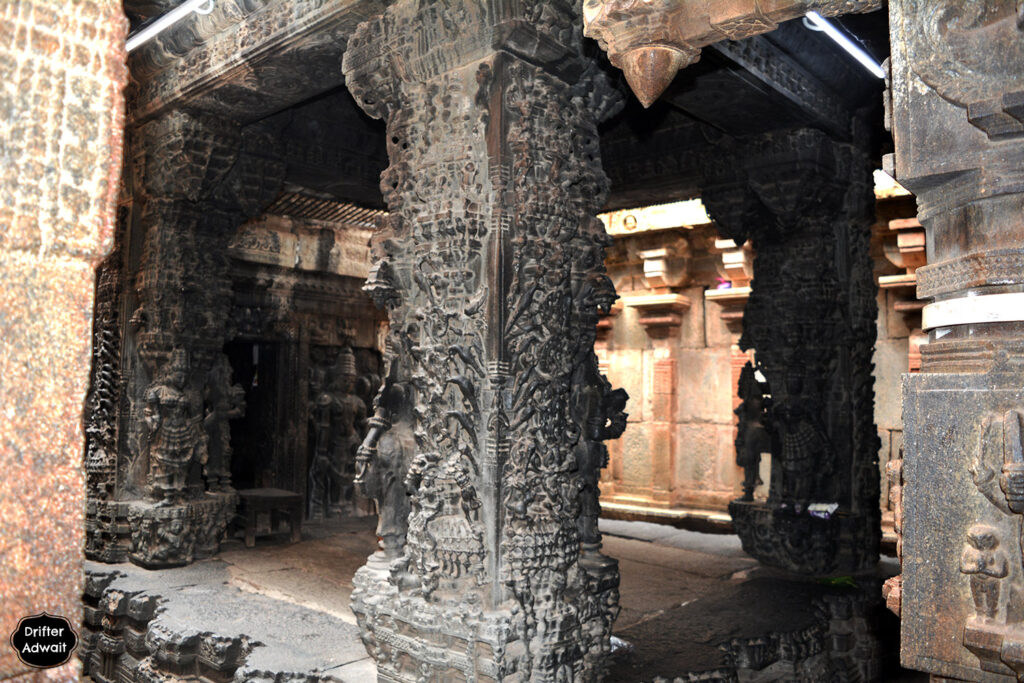

In front of the Uma Maheshwara Sanctum Santorum lies a miracle carved during the Hoysala dynasty, famous for their minute craftsmanship on the black soapstone. Kalyana Mantapa has a heavy roof, made up of soapstone, held aloof by four intricately carved pillars and a platform. All four posts are delicately carved and decorated with adorable small birds, flowers, and creepers. AEachpillar is dedicated to one cosmic couple. Apart from these natural elements, you will find Uma-Maheshwar, Laxmi-Vishnu, Brahma-Saraswati, and Swaha-Agni on their dedicated pillars.
Temple transformations:
First, the twin temples with Dravidian style Shikharas were erected by the Nolambas in 9th century. Later, Cholas added the first layer of the courtyard and ornate pillars surrounding the temple in 11th. Later on, Hoysalas added the central shrine of Uma Maheshwara, along with Kalyana Mandapa, to the temple.
And a couple of centuries later, Vijaynagara kings added the main gate, wall, and one colossal water tank named Shrungeri Teertham in the premice. It said that the Shringeri Teertham water tank was built by the one and only Lord Krishandevaraya, the legendary king of Hampi. You will find two additional structures, namely Kalyana Mandapa and Tulabhadra Mandapa, both constructed during the Vijaynagara time.
Later, entire southern India went under the brutal rule of Haider Ali and his notorious son Tipu, but somehow, this temple managed to stay hidden from their evil ‘green’ eyes. Later on, when the British took over, the temple was reopened for the devotees. Now, the Archeological Survey of India watches over this ancient place of worship.
Imagine an artist who has painted a beautiful masterpiece. Then, a few years later, another painter comes and adds a few more elements to the painting. And then, three more artists came and painted three times all over the same artwork. What do you think will happen to the painting? Even though all five painters were exceptional, the artwork will be ruined. Don’t you think?
But in the case of the Bhoga Nandishwara temple happened precisely the opposite. Each addition was so seamless that it only enhanced the beauty of this architectural gem. One Hindu dynasty came after another and did their work, pouring their architectural specialties, and yet, this temple merged all these unique architectural styles to make one masterpiece. For me, it’s one of the most outstanding examples of the Hindu renaissance and unity of the Sanatana percolated through thousands of years.
How to reach Bhoga Nandishwara Temple:
By Car: Nandi Village is about 54 KMs north of Bengaluru. Get on NH 44 and start driving towards the airport. Continue on NH 44 till village Gonur and take a left towards Nandi village. 6 KMs ahead, you will reach the parking lot of Bhoga Nandishwara temple.
By Bus: Nearest bus stand is Kempegowda Majestic Bus Stand, about 60 KMs from the temple. Regular buses are operated by KSRTC/BMCTC every 2 hours, starting from Majestic and the last stop at the top of Nandi Hills. You have to descend at the base of Nandi hill, and take a public transport/auto, which will take you to the temple.
By Air: The nearest airport is Bangalore airport, which is 32 kilometers from the temple.


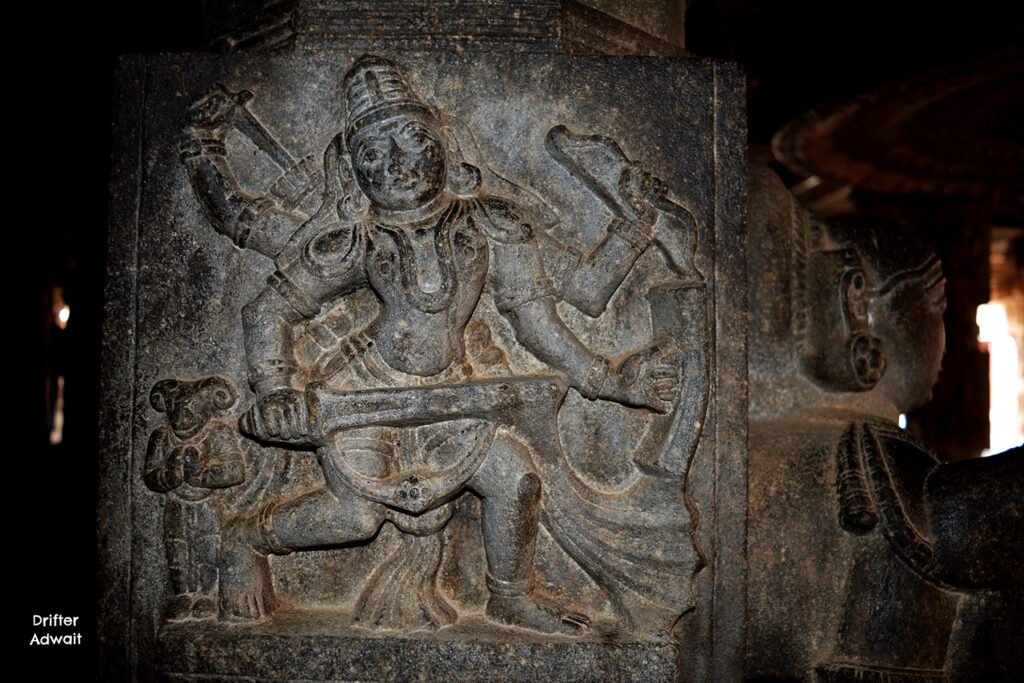

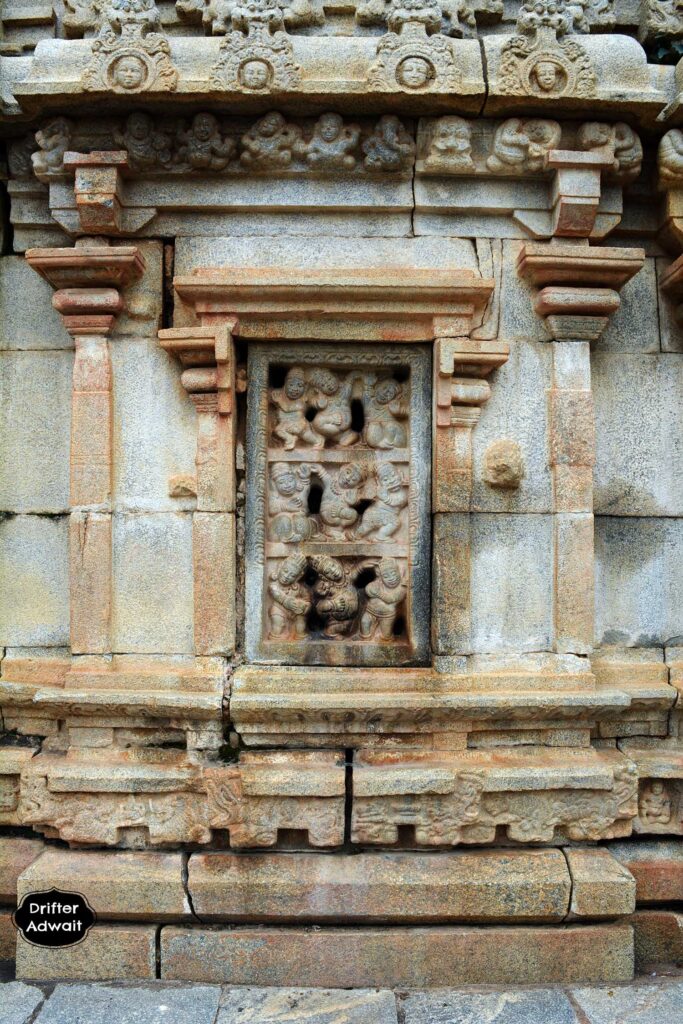
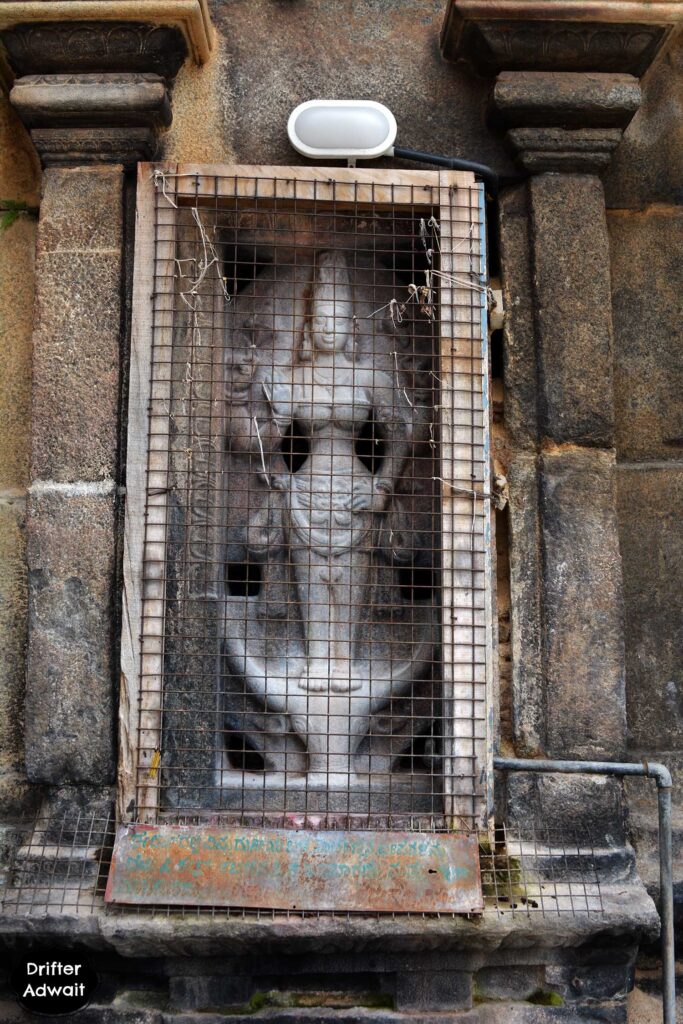
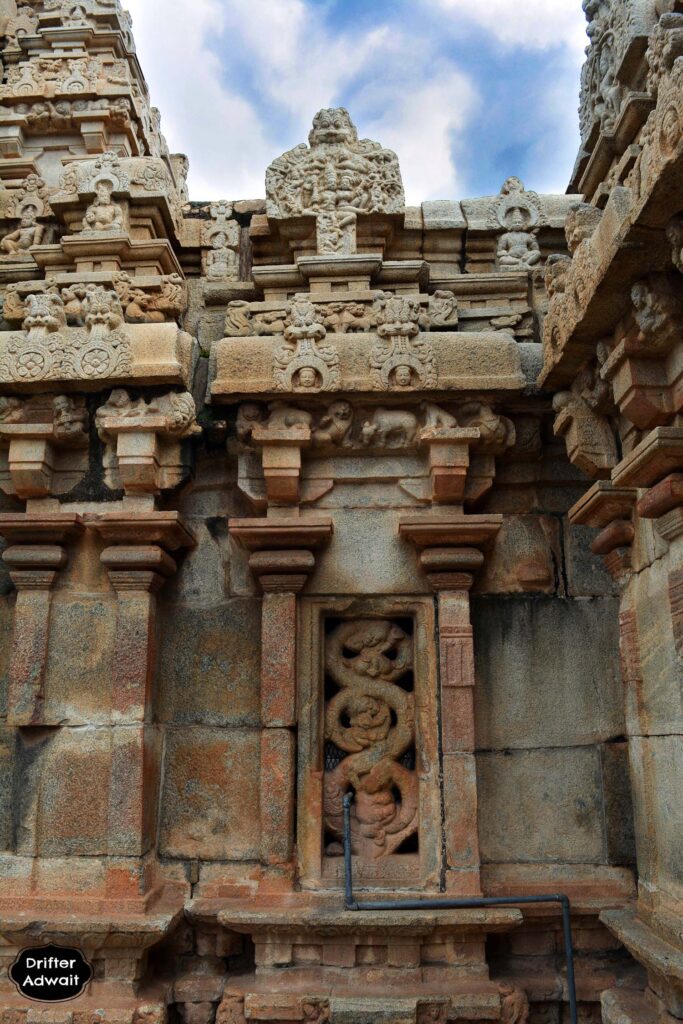
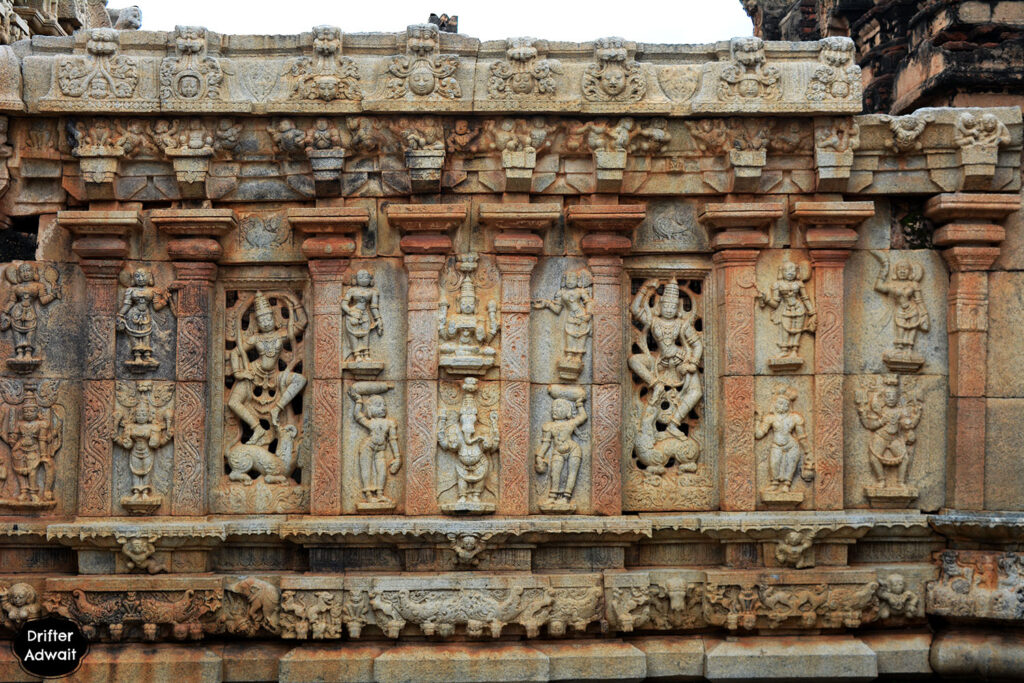
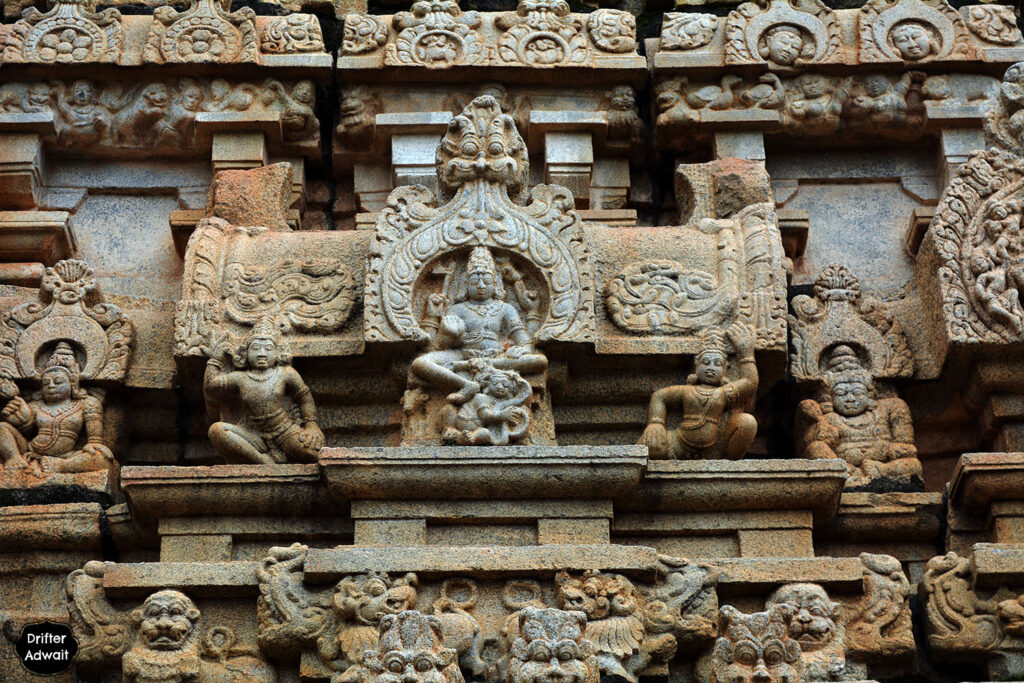

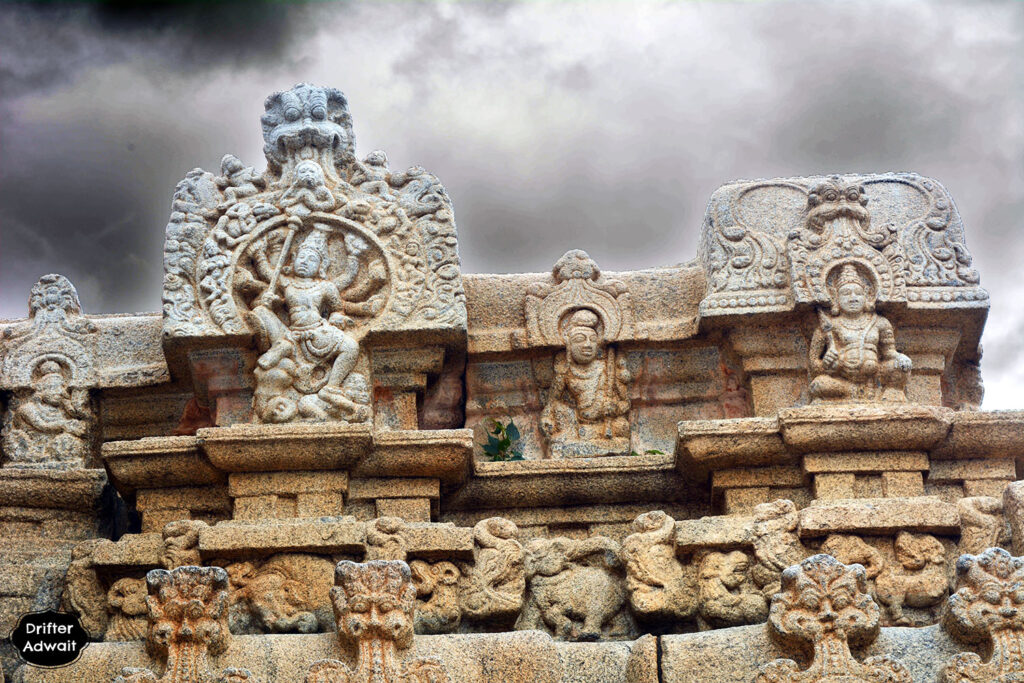
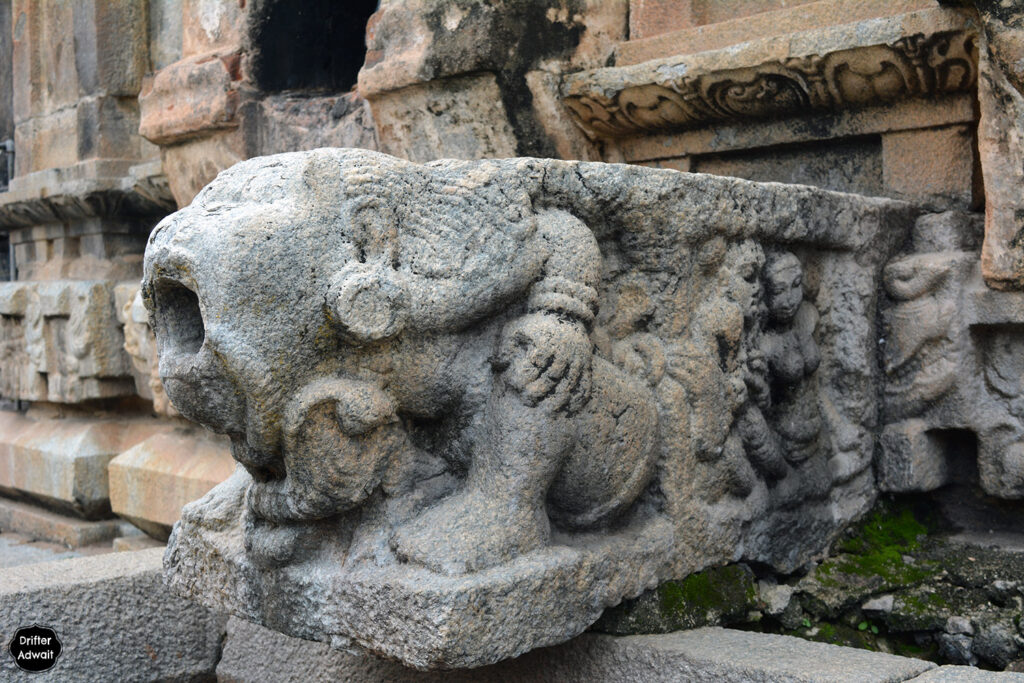
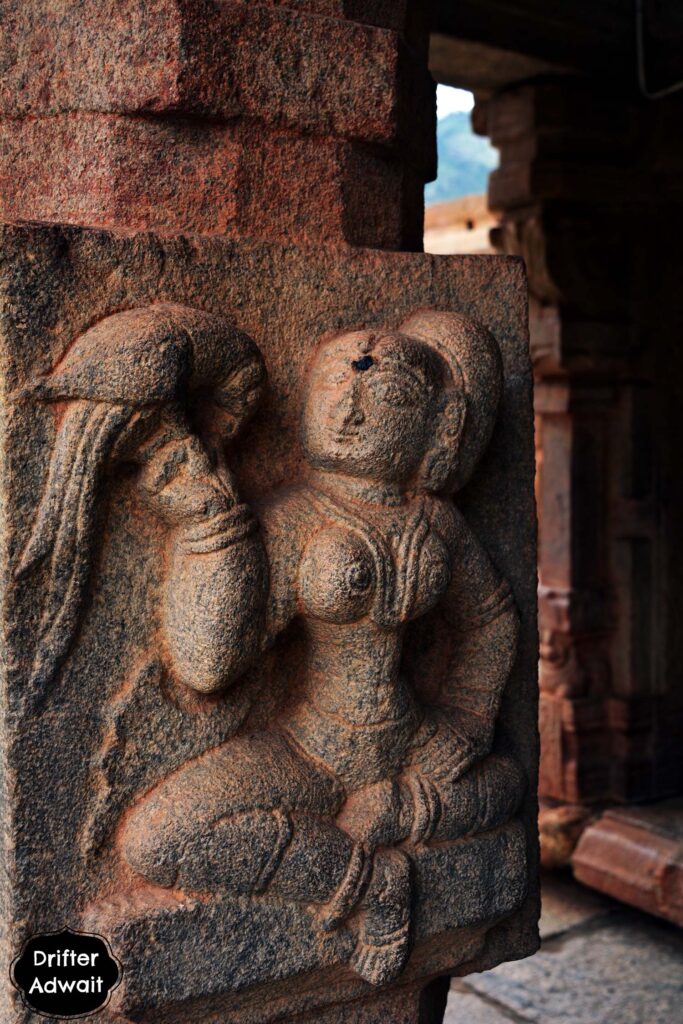

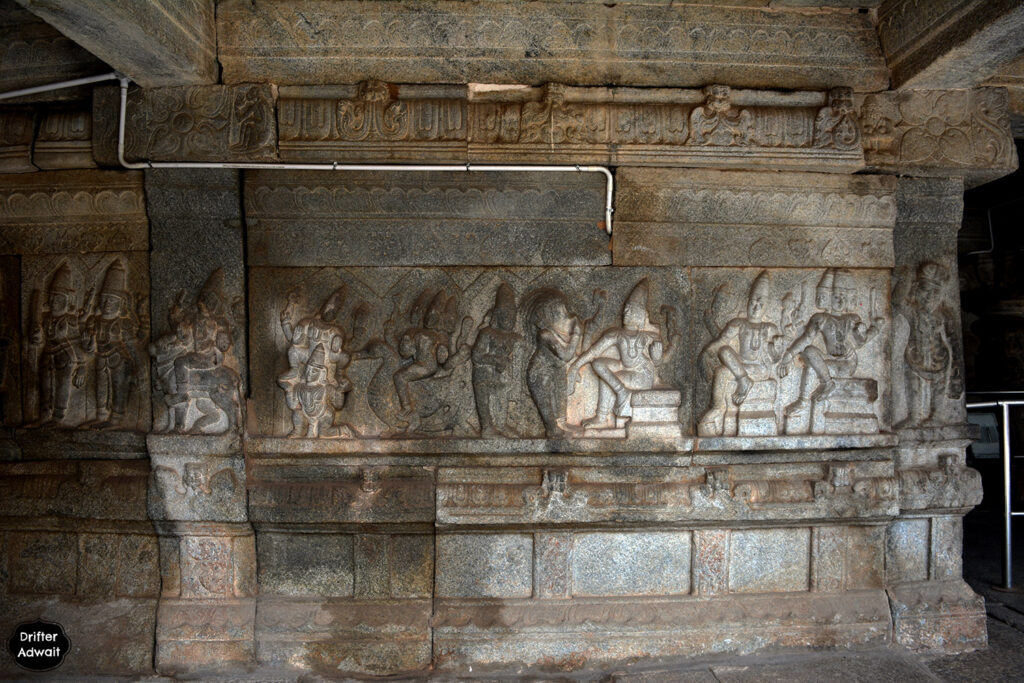
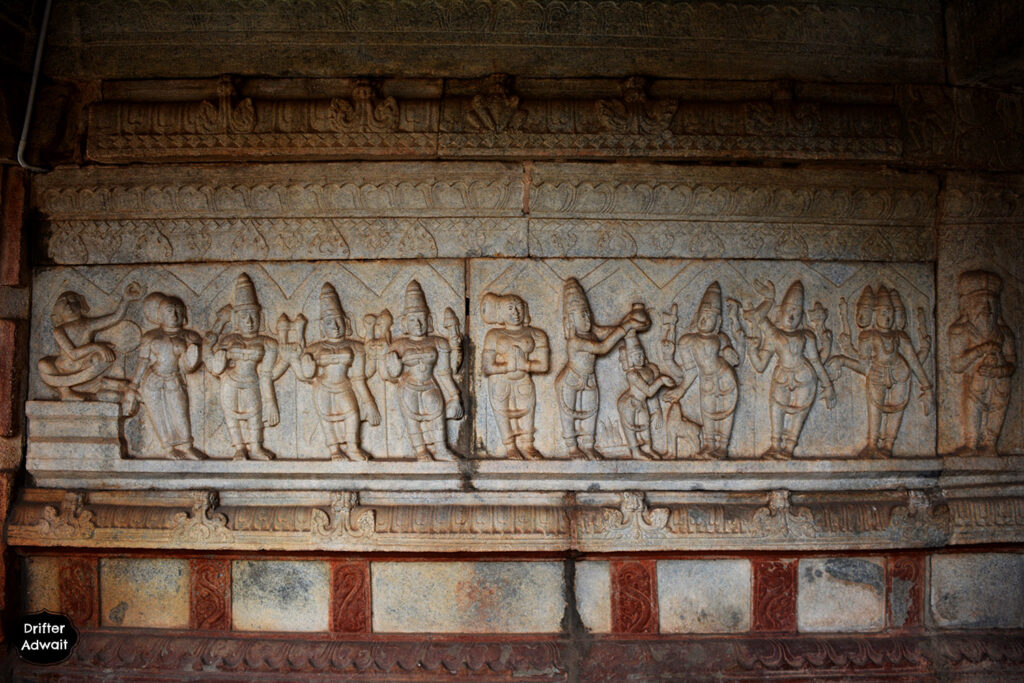

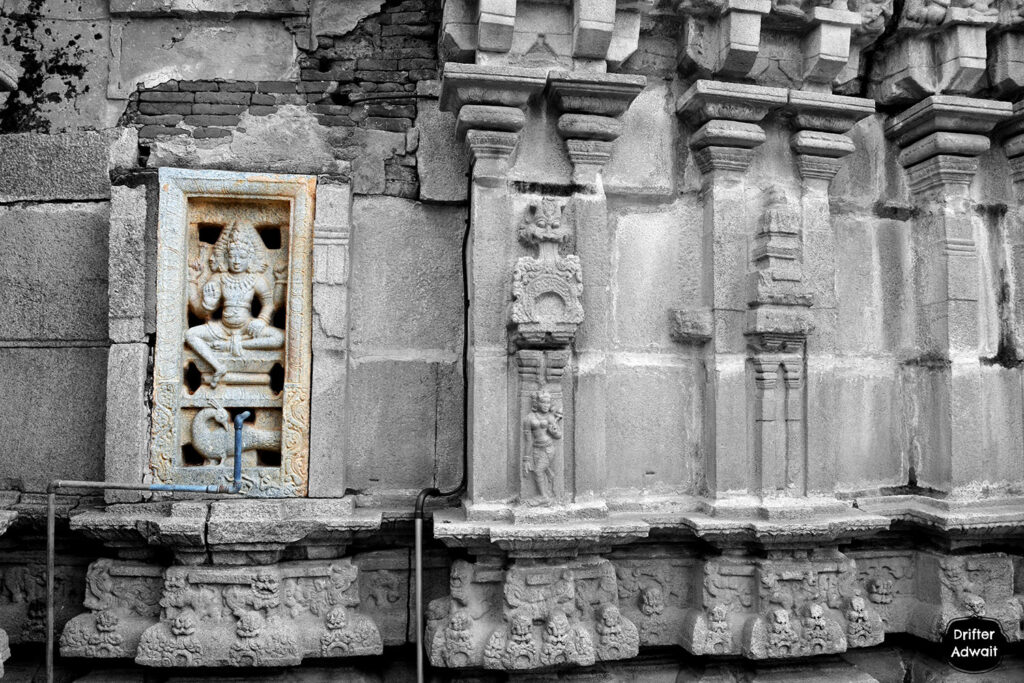
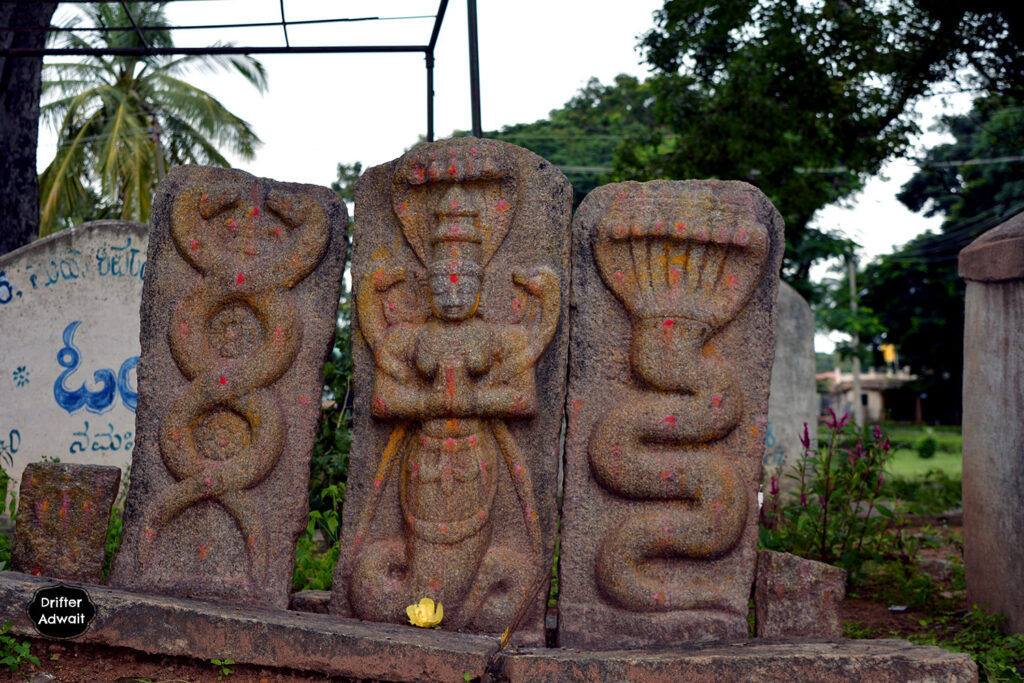
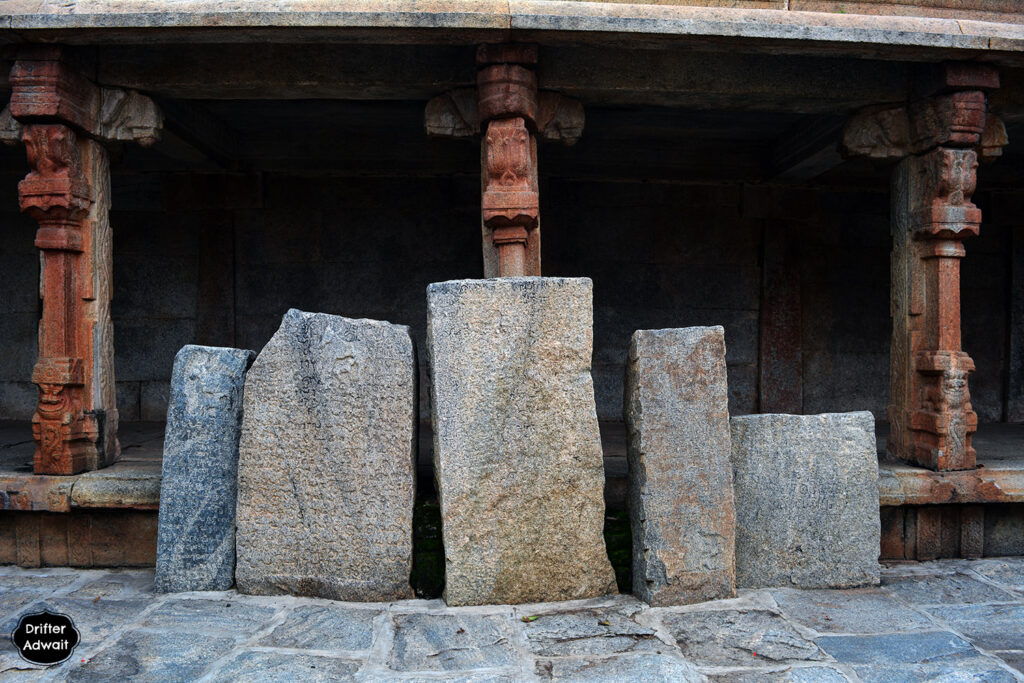
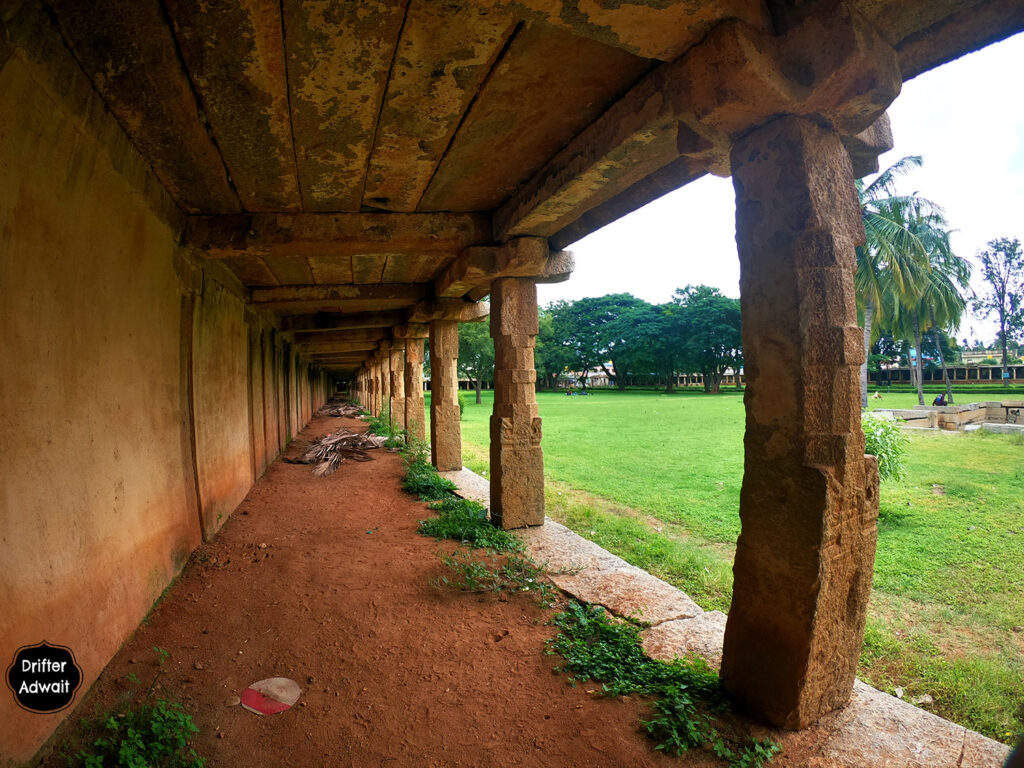
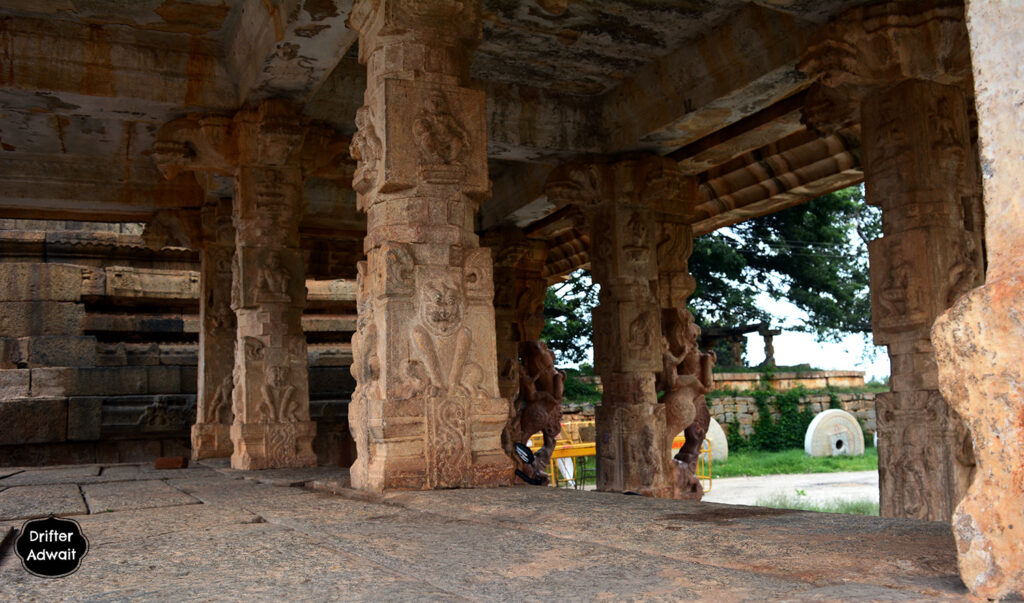
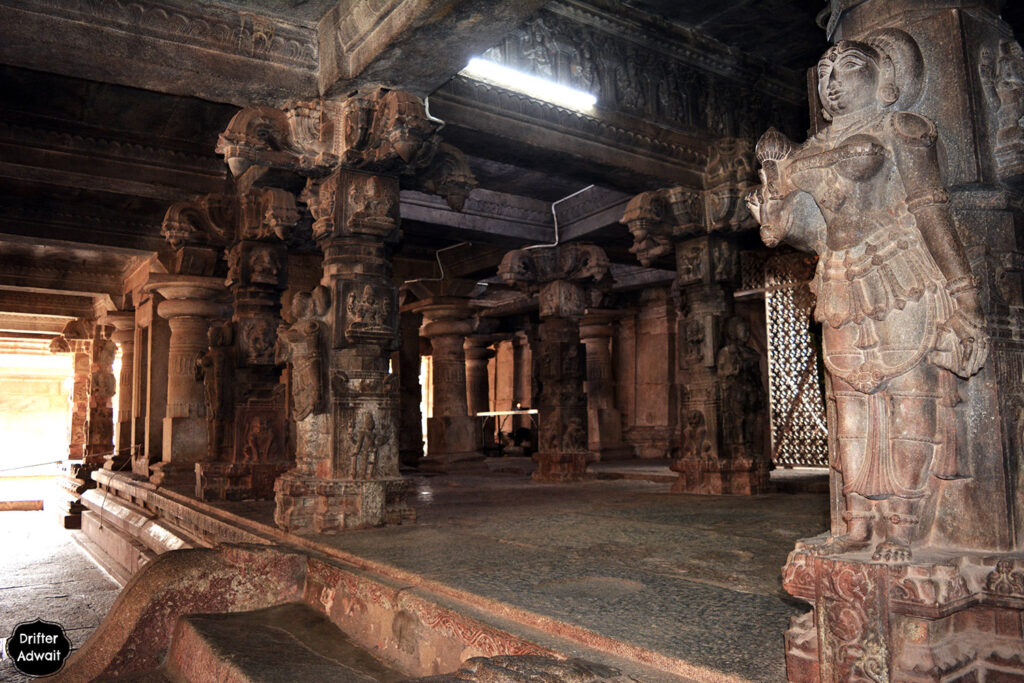
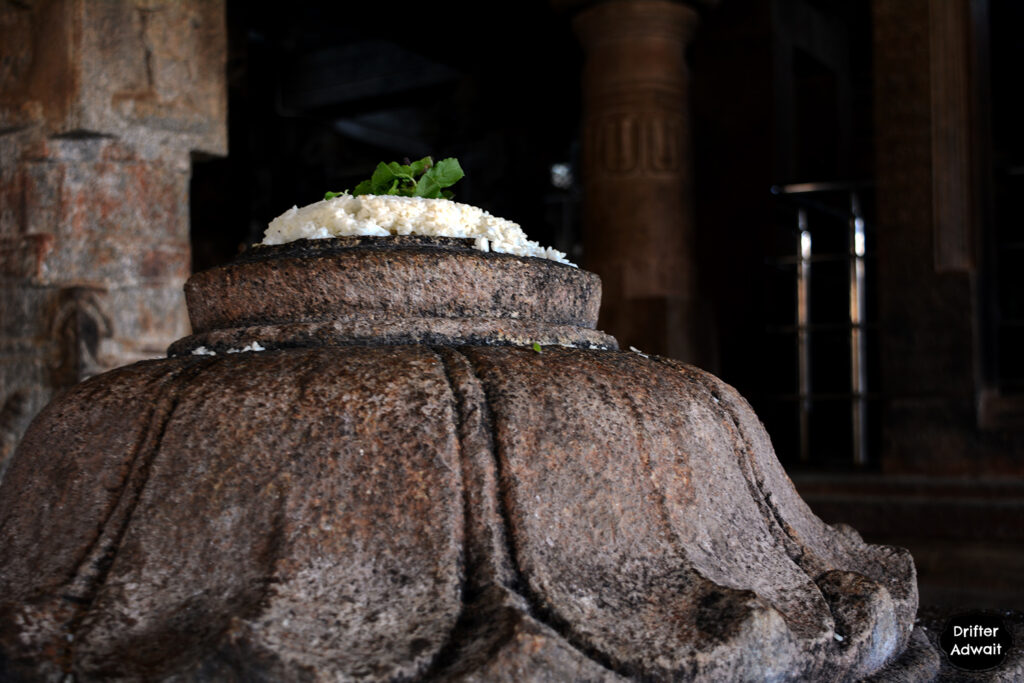
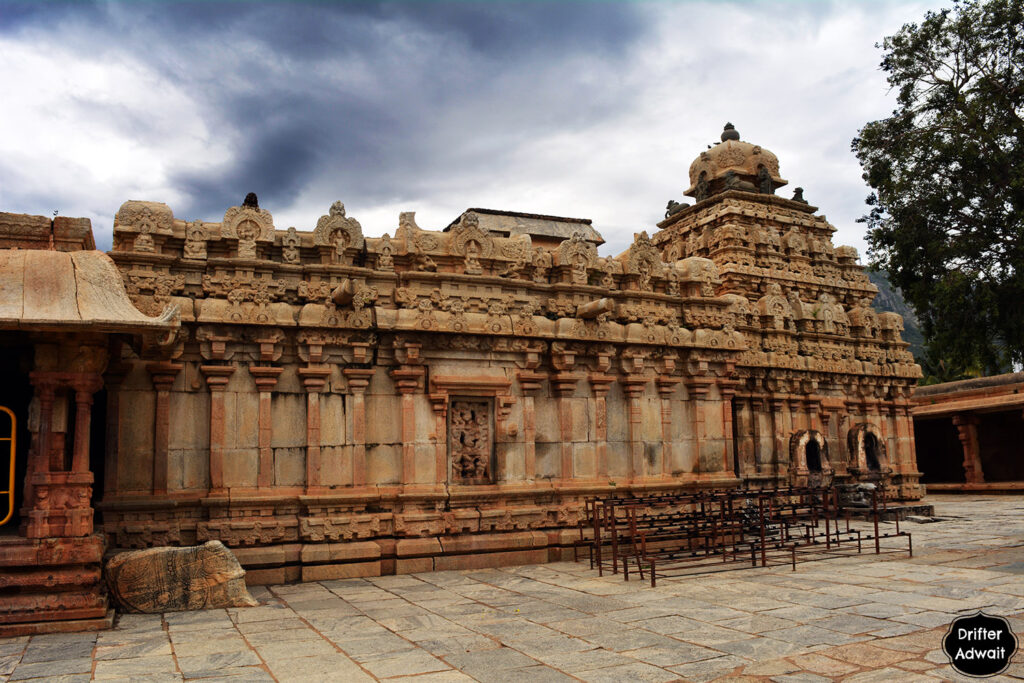
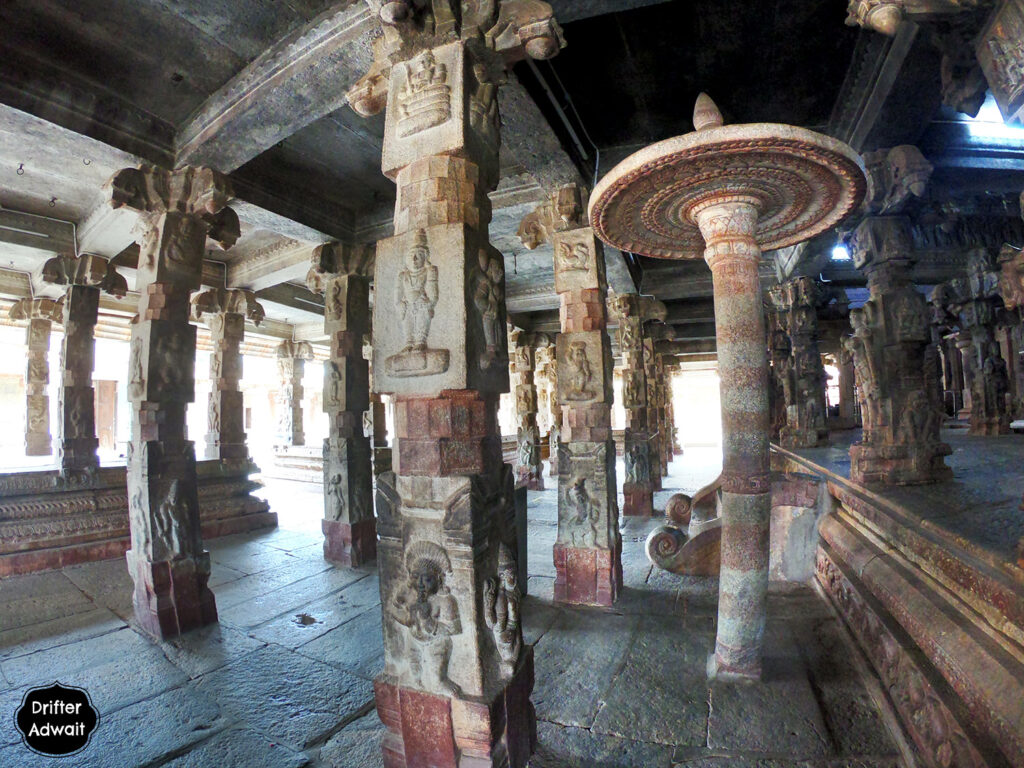
Source:
1. http://asibengalurucircle.in/bhoganandishwara-temple-nandi
2.https://commons.wikimedia.org/wiki/File:Bhoganandiswara_temple_and_Arunachaleswara_temple,_Nandi_Karnataka.jpg Floor plan of the 9th- to 10th-century Hindu temples pair, Nolambavadi style, Nolambas of Hemavati, By Ms Sarah Welch.
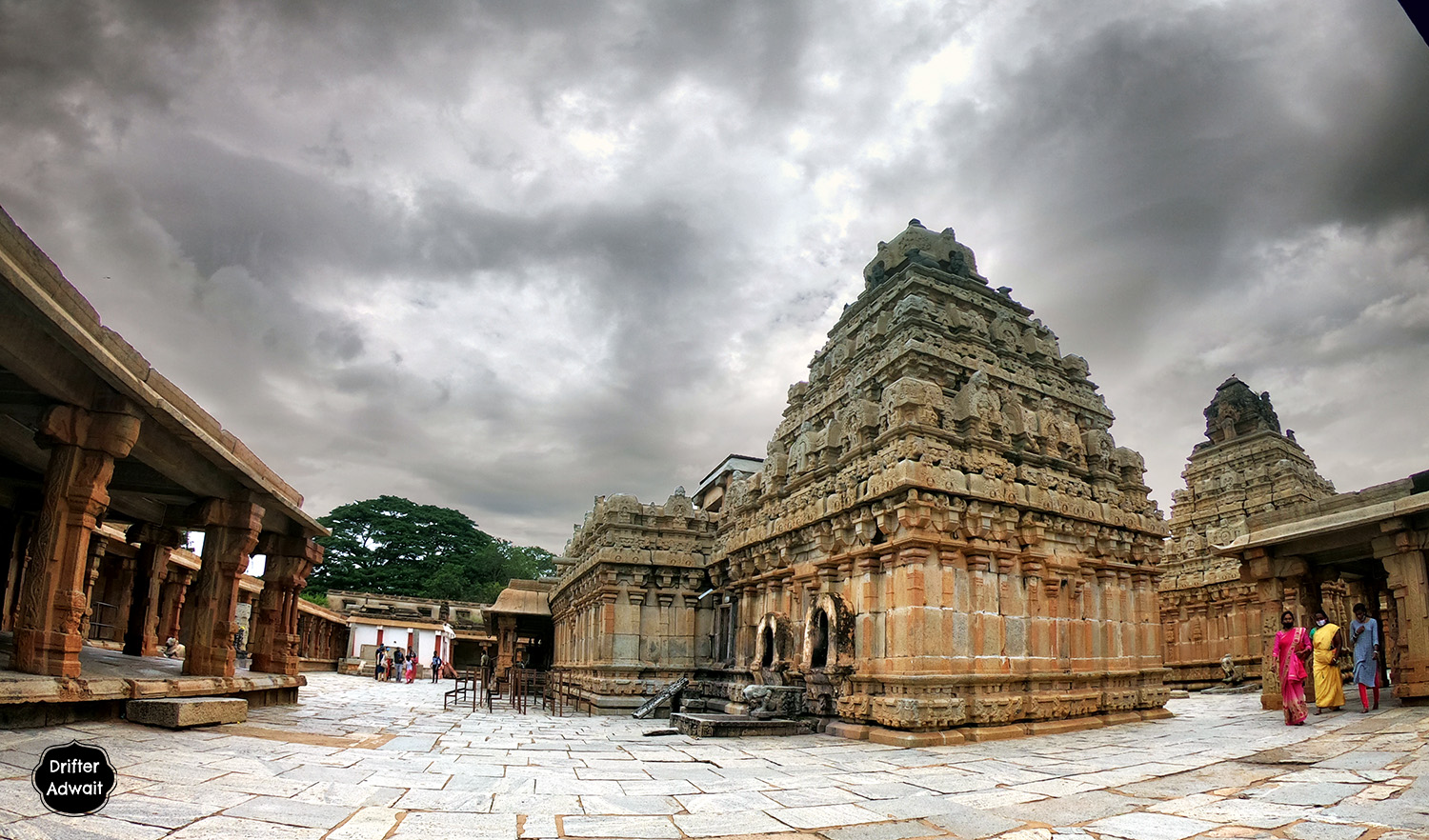
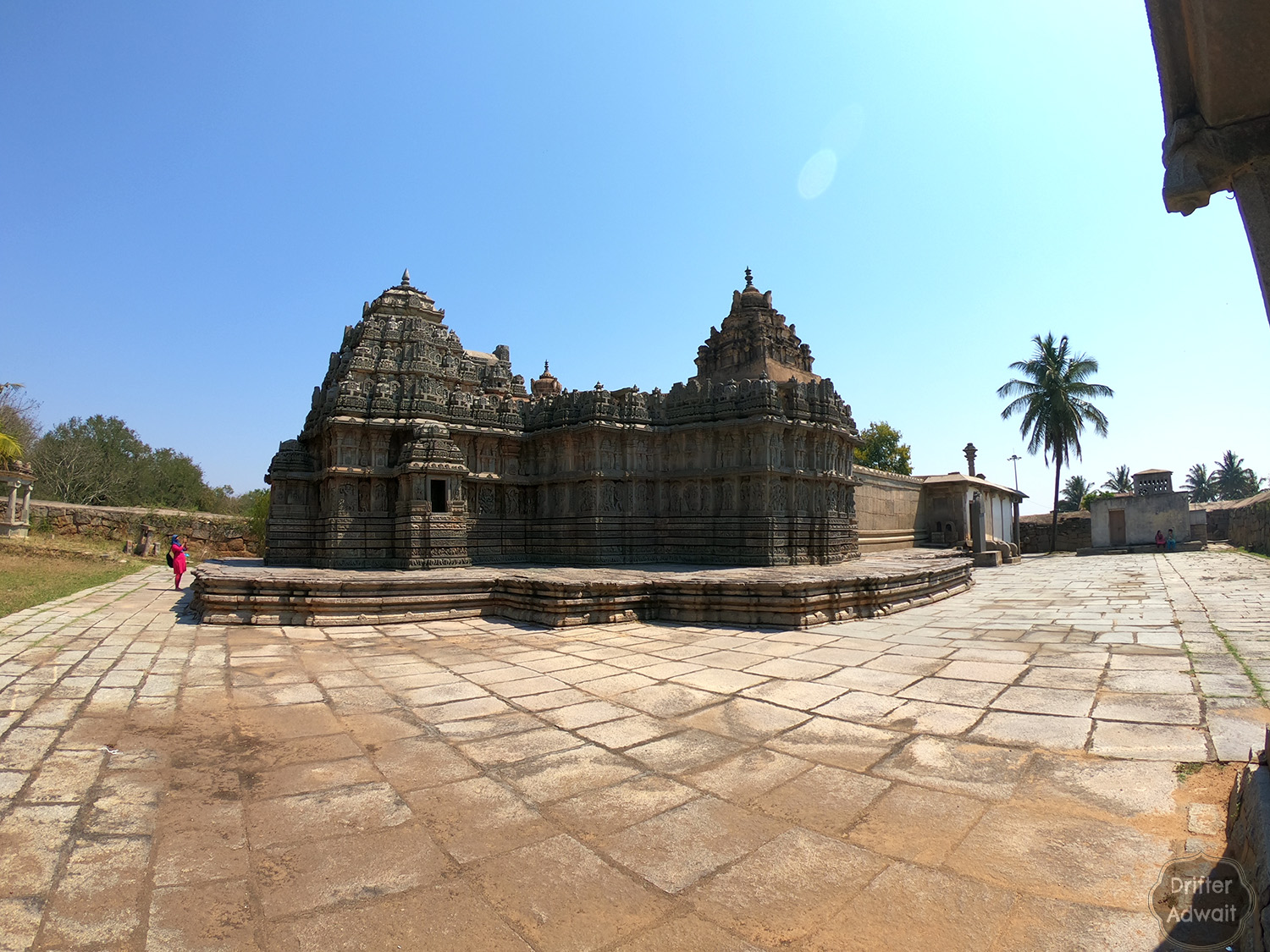


As always …..Above perfect. Wish to see this soon.
Please visit the Yoga Nandishwara temple located on the top of Nandi hills as well. For an expert like you, its a treat.